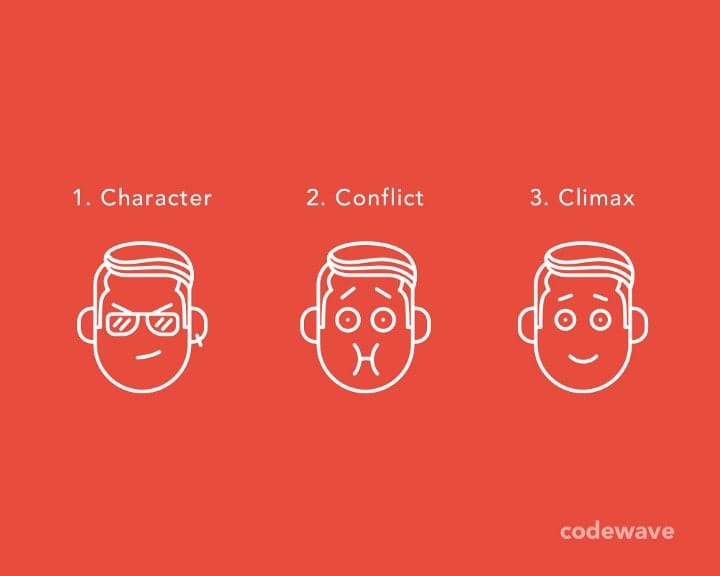No matter how great a public speaker you’re, no matter which stage of life you’re in, when it comes to introducing yourself — answering the world’s hardest question “who you are”, we all fumble.
It’s okay to fumble, because this is hard. It’s hard because this is not a one-time-well-constructed introductory pitch that works for a lifetime, for all occasions. It’s not a logical sequence of events you report — like where you grew up, where you worked & what you do now for a living.
It’s not even an elevator pitch that’s “designed to catch attention” in 30 seconds. Pitches may make you sound confident, but may not create moments of truth & human vulnerability, that‘s an essential primer for the audience to connect & engage with you.

It’s different everytime you stand up, establish eye contact with your audience, connect with them and express yourself.
If this doesn’t give you some initial jitters, you’re probably doing it all wrong, missing the whole point. Here’s where Storytelling comes to our rescue.
Storytelling is a powerful way of introducing yourself in meetings, social events, talks or just about any occassion with co-workers, friends, family, acquaintances or strangers.
The best part? It works for any occassion, any audience, anywhere, anytime. It makes you feel at ease with yourself, as all you need to do is tell your own story. It makes it interesting for your audience as there’s an element of unpredictability in the moment.
What does it take to tell your story, easily and powerfully?
Here’s our little formula:
Character + Conflict + Climax = Story

Step #1: Character
Create a mental picture of what kind of a character you are — what motivates you & what frustrates you. This is the first essential step, to deliberately make your audience imagine this character in their mind.
I am __________________, from ____________, grew up in a _______________ environment, doing _________, my friends knew me for ___________. I am passionate about _____________, love being _______________, have less tolerance for _______________.
Example: I’m Shiv, from Mumbai, grew up in a small temple town with working parents, doing engineering by accident. My friends knew me for my uncanny sense of humor that’d leave people in splits, in grave-serious situations. I am passionate about coding, love being social & spontaneous, have less tolerance for sarcasm causing injuries.
Step #2: Conflict
Now this character meets the greatest conflict in life. How did it react? This is the second step, to take your audience from an emotional high to an emotional low, as you describe the pain, traveling through deep conflict.
I was at _____________ doing _________________ when one day
___________________ happened. The situation ____________ challenged my belief ________________. This pushed me to consider _______________. My choices were ______________ & ______________. I chose ______________.
Example: I was at my 3rd job creating an animation program for Disney, when one day, legendary actor Mr. Jim Carry walked into the office. I tried hard to create a ‘striking’ conversation with a cocky tone & Jim saw through me almost instantly. He didn’t say a word, he just smiled & hugged me. That moment silently challenged me to shed my ego, just be okay being my vulnerable self.
Step #3: Climax
How did this character resolve the conflict. How does this story end? What learning lead to a change? This is the last step, to again take your audience to a high — leaving them with an idea that changed your life.
Along that path ______________, I realized _____________, gained a new perspective _______________ & this changed me from being ___________, to becoming _____________. I strongly believe _______________.
Example: As time passed, along my journey as a programmer & an occasional standup comedian, I realized it’s not about how strategic & smart you show you’re, in making others laugh — it’s about how humble you can be to let your spirit reflect in your candid, uncanny sense of humor & magically touch others. I believe ego blinds you from who you are. Humility awakens.
If you‘d like to continue your story, with a 30 sec pitch..
My role here currently is ____________________, it’s unique & exciting ‘coz ___________________, working with ___________________, making decisions like ________________, solving problems like _________________, impacting ______________. I intend to do more of _______________, to create value. You can reach me for ____________________.
Example: My role here currently is building disruptive movie making software. It’s unique & exciting ‘coz I get to work with leading film-makers, imagine the user experience frame by frame to be able to build AI enabled tools that can bring that experience alive in the moment. I remember my learning, from Jim Carrey, on how humility is so important to design any experience with empathy. I intend to do advanced software design, for the movie industry.
Liked what you read?
Stay connected to Codewave for more such insights and feel free to reach us at hello@codewave.in or +91 8971824910. If comfortable you may drop by at 1st Floor, Shree Chambers, #307, Outer Ring Rd, Banashankari 3rd Stage, Bengaluru, Karnataka 560085. Thanks for taking out time to read this article. We hope it enriched your existing knowledge. Do let us know your views, by sending an email to hello@codewave.in.
Frequently Asked Questions(FAQs)
1. Why is storytelling a powerful way to introduce yourself in various situations?
Storytelling is a powerful way to introduce yourself because it creates an emotional connection with the audience. It allows you to show your character and the conflicts you have faced, making you relatable and human. It also creates a sense of unpredictability, keeping the audience engaged.
2. Why is it important to make the audience imagine the character in their mind when introducing yourself through storytelling?
Making the audience imagine the character in their mind brings the story to life and makes it relatable and memorable. It’s a technique that allows the audience to put themselves in the story, creating an emotional connection and engagement with the storyteller. The audience can see themselves in the story, and that makes it more interesting and impactful.
3. How do you create a mental picture of your character when introducing yourself through storytelling?
Focus on describing your background, personality, interests, and values. Use descriptive words and phrases to paint a clear and vivid picture of who you are. You can include details such as where you grew up, what you do for a living, your hobbies, and your passions. Also, it’s important to mention the unique characteristics that define you and that make you stand out. This way, the audience can easily imagine the character and form a connection with you.








